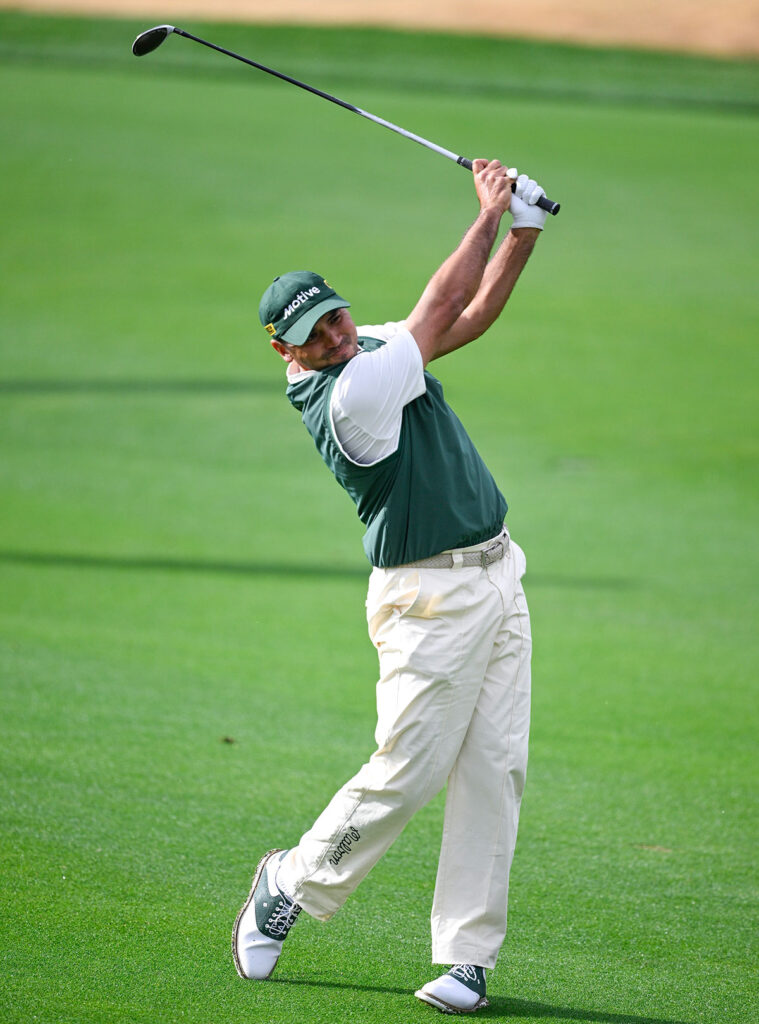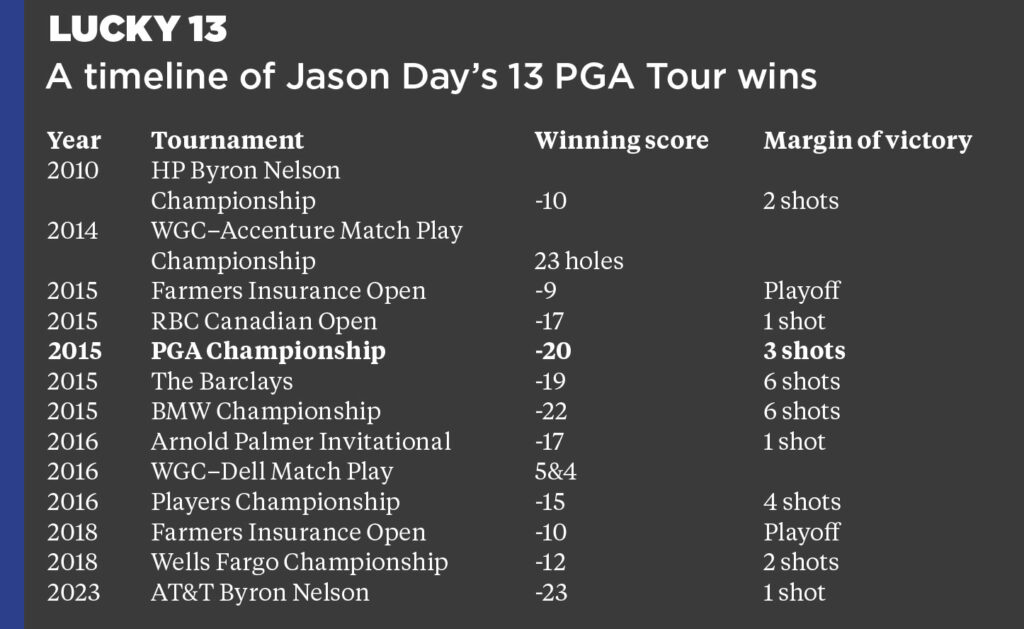Jason Day finds light at the end of a long tunnel.
There is a fascinating study that can be made of the great professional golfers and how their careers often centred on one torrid stretch that accentuated their body of work.
Arnold Palmer is perhaps the quintessential example. While he was arguably the game’s biggest star for the bulk of the time from 1960 to 1975, he won all seven of his major titles between April 1958 and April 1964. When he won a fourth Masters in ’64, Palmer was just 34 and had you suggested he’d never again win another major, no one would have believed you. But that’s how it unfolded.
Now to use an introduction of Arnold Palmer to morph into a discussion of Jason Day is taking great latitude, admittedly. But remember this premise of torrid stretches of play that punctuate careers of great golfers. With Day, the Queenslander who took his “can’t miss” tag and rode it to the top of world ranking, it is easy to forget in this era of instant gratification just how brilliantly he played at his very best. After all, it wasn’t that long ago.
Crazy, but our focus on PGA Tour golfers in today’s landscape is often fixated on Jordan Spieth and Justin Thomas. Best mates since their American Junior Golf Association days. College rivals while at the universities of Texas and Alabama. Glued at the hip as Ryder Cup and Presidents Cup teammates. In their 20s, they each caught fire on the PGA Tour and got to No.1 in the world.
For five years (2013-2017), Spieth won 13 times, three of them majors. Thomas’ five-year stretch (2016-2020) produced 13 wins, one of them majors, while a second major came two years later.

Suffice to say, their legends are cemented, even if as 30-year-olds they are both caught in a drought. Wins have come painfully infrequently since their torrid stretches, and the fact they have fallen to 18th (Spieth) and 28th (Thomas) in the Official World Golf Ranking has people wondering what’s wrong. Which proves that everything is a matter of perspective, because as the golfer currently sitting 21st in the world ranking, Day has people applauding what has gone so right for the personable Aussie.
His story isn’t unlike those of Spieth and Thomas. Day’s five-year hot stretch (2014-2018) was 95 tournaments of impactful play. There were 11 PGA Tour wins, including the 2015 PGA Championship when he outplayed Spieth in a memorable battle at Whistling Straits.
What should never be overlooked is how Day dominated the world ranking – he was No.1 on three different occasions, including a 47-week stretch from March 2016 to February 2017. Like Spieth and Thomas, Day got to the peak of the world ranking in his 20s (he was 27 and 28 years old), but what makes his story so appealing is how he battled through injuries (vertigo and back pain, among others) and confronted a real-life dilemma.
“To be honest, I was very close to calling it quits,” said Day, citing injuries that led to poor play and made him miss being at home with his wife, Ellie, and their five children.

He had followed his monster year of 2015 (five wins, including the PGA) with three marquee triumphs in ’16 (Arnold Palmer Invitational, WGC–Dell Technologies Match Play, Players Championship) and in ’17 he signed a lucrative contract with Nike. Day was No.1 in the OWGR for a 51st week in early April 2017 but exactly five years later, he found himself ranked 178th and sliding badly.
Quit? There were signs pointing that way and guess what? “I was OK with it,” Day said, “just because it was a very stressful part of my life.” Ellie, though, wouldn’t hear it. “She never gave up on me trying to get back to the winner’s circle. She just always was pushing me to try to get better.”
Even when Day ended the 2022 season with just $US1,086,460 – his lowest money total since his rookie season of 2008 – there was a sense of enthusiasm. The key, Day has said, was his maturation and he addressed that question in May 2023 when he won for the first time in five years.
“I think the advice I’d have to give [a younger Jason Day] is to be patient, always strive to get better… just try to better yourself.”

The win at the AT&T Byron Nelson, a title he will defend this month, was punctuated with a closing 62 and provided a sense of symmetry for Day. That’s because his first PGA Tour win had come at the same tournament 13 years earlier.
“It’s mainly about the journey,” Day said in the aftermath of that win. And now, at 36, he is saturated in perspective. “At the end of the day, golf is a nice thing to have and winning is a great thing to have. But the people around you (his wife and children) are the most important things at the end of the day.”
The win, Day’s 13th on the PGA Tour, clearly meant a lot to him. But what also provides comfort is a high standard of play that has him firmly entrenched among the game’s elite once again. Sitting 22nd, just behind Spieth and slightly ahead of Thomas, was noteworthy on the cusp of the major season, plus a potential return into the Presidents Cup fold where he last appeared for the International team in 2017.

Day’s greatest strength is his peace of mind. “I just can’t help but feel thankful to be able to play this game,” he said earlier this year, though it’s a sentiment that consumes him every day.
So if you find yourself pondering elite names who have been dropping in the world ranking, stop and pay notice to a quality player who has battled back to be where he belongs.
Photos: Getty Images
Official content of the PGA Tour
